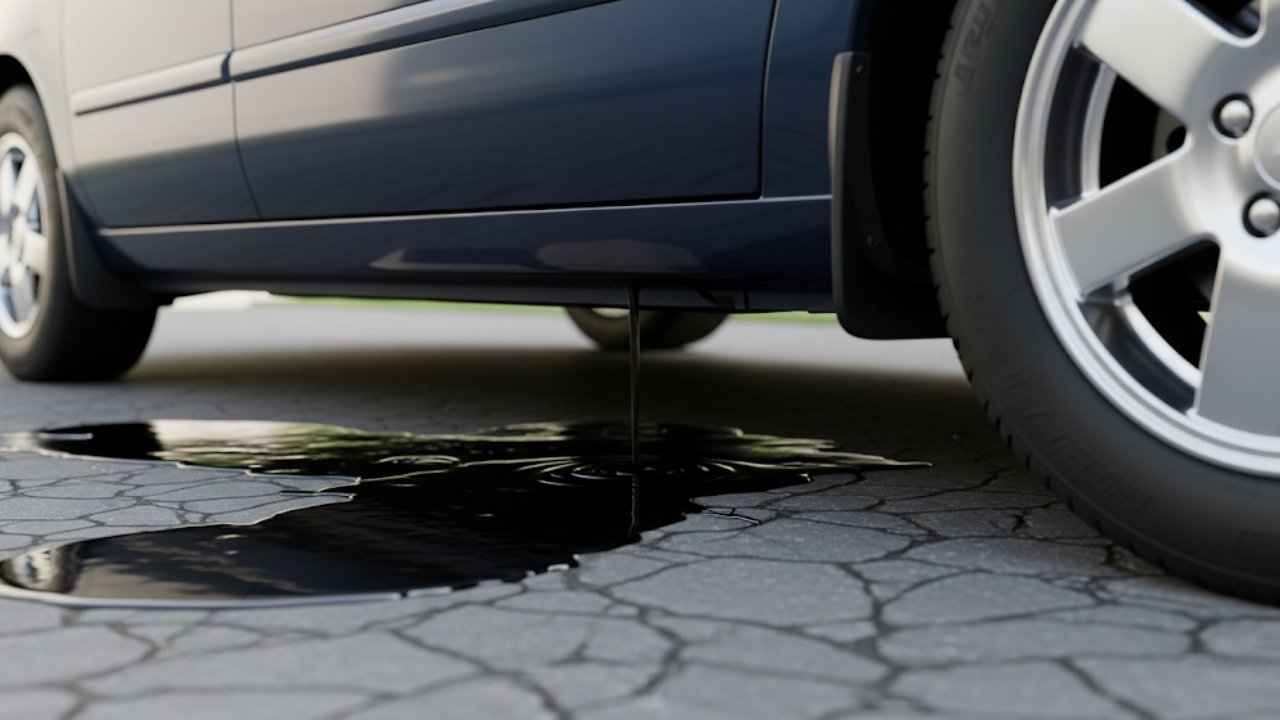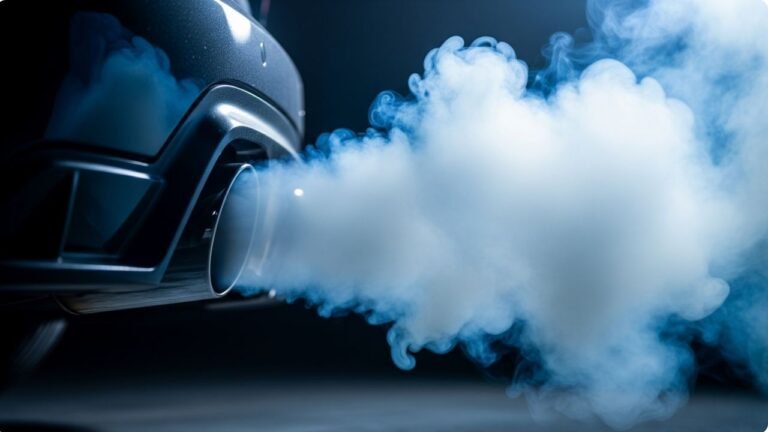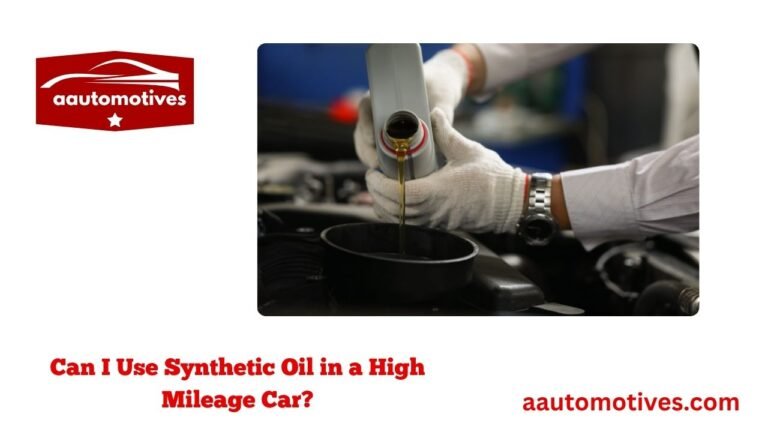Why Is Oil Leaking Under My Car?

Ever walked out to your car, ready to hit the road, and spotted a dark, greasy puddle beneath it? That sinking feeling—like your car is crying oil tears—isn’t just frustrating, it’s downright nerve-wracking. Trust me, I’ve been there. One morning, right before a family trip to the Coromandel, I saw it: a shiny, black spot under my front bumper. My heart sank. “Oil leaking under my car?” I thought. “That can’t be good.”
Turns out, I wasn’t alone. In New Zealand—and across the globe—it’s a common issue. But many people don’t know what it really means. Is it dangerous? Expensive? Can you still drive? Let’s talk about this in a way that makes sense. I’m going to walk you through the causes, dangers, signs, and solutions in plain language. We’ll keep things simple, smart, and real.
So if you’re wondering, “why is there oil leaking under my car?” — you’re in the right place.
In This Article
- 1 Oil Leaks Are Your Engine’s Cry for Help
- 2 The Common Culprits: Why Oil Is Leaking Under Your Car
- 3 Is It Safe to Drive With an Oil Leak?
- 4 How to Identify an Oil Leak Like a Pro
- 5 The Cost of Ignoring It: From Drops to Disasters
- 6 What to Do When You See Oil Leaking Under Your Car
- 7 How to Prevent Oil Leaks Before They Start
- 8 DIY or Call the Pros? Fixing Oil Leaks the Right Way
- 9 Oil Leaks and the Environment: The Spill No One Talks About
- 10 Watch for These Red Flag Warning Signs
- 11 FAQs: Answering the Big Questions About Oil Leaks
- 11.1 1. Can I drive short distances with an oil leak?
- 11.2 2. What does engine oil look like when it leaks?
- 11.3 3. How much oil is too much to lose?
- 11.4 4. Is an oil leak always expensive to fix?
- 11.5 5. What happens if I ignore a small oil leak?
- 11.6 6. Will an oil leak cause my car to fail a WOF?
- 11.7 7. Can extreme weather cause oil leaks?
- 11.8 8. Do oil leak stop additives work?
- 12 Final Thoughts: Your Car Deserves Better Than a Drip
Oil Leaks Are Your Engine’s Cry for Help

Why is this important? Oil leaks can:
-
Cause engine overheating
-
Lead to costly repairs
-
Make your car unsafe
-
Harm the environment
I had a friend, Sam, who kept ignoring a tiny leak on his Honda Accord. A few weeks later, his engine overheated on the way to Rotorua. What started as a $20 seal replacement ended up costing him $2,000 for a new head gasket. Yikes.
So, if you see even a small drop of engine oil on your driveway or garage floor, don’t brush it off. Your car is giving you a clue. Let’s decode it.
The Common Culprits: Why Oil Is Leaking Under Your Car
There isn’t one single reason your car might be leaking oil—it’s like a detective case. Below is a breakdown of the most common causes of oil leaks and how they show up:
| Cause | What It Means | Signs to Watch For |
|---|---|---|
| Worn-out oil filter | Filter no longer seals properly | Oil around filter, drip near front center |
| Loose or damaged drain plug | Plug at bottom of oil pan is worn or not tight | Leak right under engine area |
| Valve cover gasket leak | Gasket sealing the top of the engine is cracked | Oil on engine block or down the side |
| Oil pan damage | Oil pan hit by rocks, curb, or rusted through | Large puddle under engine |
| Cracked seals or gaskets | Rubber seals have dried up over time | Slow, consistent drip |
| Overfilled engine oil | Too much oil builds pressure, forces leak | Oil spill from dipstick area or filler cap |
| Blown head gasket | Serious issue; oil mixes with coolant | Milky oil, overheating engine |
If you’re seeing oil under your car, check where the puddle is and what color the fluid is. Engine oil is usually amber when new, but turns brown or black as it ages. Smell it too—burnt oil has a sharp, bitter smell.
Is It Safe to Drive With an Oil Leak?
Here’s where common sense and caution need to meet. I get it—your schedule’s full. You’ve got work, errands, maybe kids’ rugby practice. But when you spot oil leaking under your car, it’s not just an inconvenience—it’s a safety concern.
Driving with an oil leak can:
-
Lower oil levels quickly
-
Cause your engine to seize or overheat
-
Lead to dangerous roadside breakdowns
-
Create slippery roads for others
I once tried to “just get through the week” with a slow oil leak. Thought I’d be fine. But the oil light came on halfway through my commute, and I had to pull over near Morrinsville. Tow truck, delay, and an urgent mechanic bill later… lesson learned.
When should you stop driving?
-
If the oil is leaking fast (you see a large puddle within a few hours)
-
If your oil pressure light is on
-
If the car is making strange noises or smells hot
If it’s a slow leak, and your oil levels are safe, you might be able to drive short distances—but get it checked ASAP.
How to Identify an Oil Leak Like a Pro
Let’s talk DIY. You don’t have to be a mechanic to spot a leaking oil issue early. Just a few tricks can save you stress, money, and a surprise breakdown.
Here’s a simple method to check for an oil leak:
-
Park your car overnight on a clean piece of cardboard or newspaper.
-
Check in the morning. Are there dark spots? Are they under the engine?
-
Touch the fluid carefully. If it’s slippery and smells burnt, it’s likely engine oil.
-
Check your oil level using the dipstick. If it’s low, that’s a red flag.
Use this like a basic first-aid check. It won’t fix the problem, but it will give you clues.
Some drivers even use UV dye and a blacklight. Pour dye into the oil, drive a short distance, and use a UV flashlight to see where it leaks. It’s like CSI for cars.
The Cost of Ignoring It: From Drops to Disasters
Ignoring a few oil drips is like ignoring a toothache. You might think, “I’ll get to it eventually.” But wait too long, and the problem escalates.
Here’s what ignoring oil leaking under your car might cost you:
| Neglected Problem | Likely Outcome | Estimated Repair Cost (NZD) |
|---|---|---|
| Worn oil gasket | Engine damage from oil starvation | $500 – $1,200 |
| Cracked oil pan | Severe leak; potential engine seizure | $700 – $1,800 |
| Head gasket failure | Engine rebuild or replacement | $2,000 – $5,000 |
| Long-term oil burning | Poor fuel economy, loss of power | $300 – $1,000 |
These aren’t made-up numbers. They’re based on real quotes from garages across Auckland, Wellington, and Christchurch.
What to Do When You See Oil Leaking Under Your Car
So now you’ve found oil leaking under your car. What next? Here’s a clear, step-by-step game plan that you can follow:
Step-by-Step Action Plan:
-
Stay calm: Not all leaks mean disaster. Many are simple fixes.
-
Check your oil level: Use the dipstick. If it’s below minimum, don’t drive.
-
Clean the area: Wipe under the car to see how fast it leaks again.
-
Use a catch tray: Prevent driveway stains and environmental damage.
-
Book a mechanic: Mobile mechanics can come to you if it’s not safe to drive.
-
Keep records: Take a photo of the leak and write down what you notice.
If you’re in rural NZ or somewhere remote, and can’t see a mechanic right away, top up the oil temporarily to keep the engine protected. But only as a short-term fix.
How to Prevent Oil Leaks Before They Start
They say prevention is better than cure—and that’s 100% true with oil leaks. Taking care of your engine and stopping oil leaking under your car before it starts is often as simple as keeping an eye out and showing your car a bit of love.
Here’s how I avoid the oil leak drama now:
️ Smart Oil Leak Prevention Tips:
-
Stick to regular oil changes: Old, dirty oil breaks down gaskets and seals.
-
Use the right type of oil: Your owner’s manual isn’t just bedtime reading—it’s a cheat sheet for keeping your car happy.
-
Check oil levels monthly: Use your dipstick; it takes 30 seconds.
-
Inspect the ground regularly: A quick look under your car each week could save you thousands.
-
Replace seals as they age: Rubber parts wear out. If your car is over 10 years old, check them annually.
Just like brushing your teeth keeps you out of the dentist’s chair, these little habits can keep your engine from bleeding oil all over your driveway.
DIY or Call the Pros? Fixing Oil Leaks the Right Way
So, you’ve confirmed there’s oil leaking under your car—now comes the big question: do you fix it yourself, or go to a mechanic?
Let’s break it down.
DIY Fixes (When It’s Simple):
-
Loose oil cap: Twist it tight or replace it. Easy fix.
-
Oil filter leak: If it was changed recently, it might just need tightening.
-
Small gasket leaks: If you’re handy with tools, replacing a valve cover gasket isn’t too scary.
But be honest with yourself. If you’re unsure or don’t have the right tools, trying to fix a leak can make it worse.
When to See a Mechanic:
-
Oil pan or head gasket leaks
-
Leaks near the timing cover or rear main seal
-
Burning oil smell inside the cabin
-
Dripping oil near belts or pulleys
I learned this the hard way with my old Subaru Legacy. Tried replacing the oil pan gasket myself in the driveway—ended up with a bigger leak and a call to the AA. Lesson? Know your limits.
Mechanics have lifts, proper sealants, torque tools, and most importantly—experience.
Oil Leaks and the Environment: The Spill No One Talks About
Let’s get real for a moment. Beyond car repairs and costs, there’s another angle to oil leaking under your car that matters—a lot.
Oil leaks hurt the environment. Even a small daily drip adds up. Over a month, that’s half a litre of oil seeping into the soil, gutters, and storm drains. That oil ends up in streams, rivers, and eventually the ocean. Fish, birds, and even your dog if it licks a puddle—all at risk.
Simple Eco-Friendly Steps:
-
Use drip trays in your garage or driveway
-
Clean spills with kitty litter or sand, not a hose
-
Dispose of oil and rags properly—most NZ Supercheap Auto stores take them
-
Fix leaks quickly. Don’t wait
Being a car owner means being responsible. Even small habits make a big difference. Let’s not let our cars silently pollute the places we love.
Watch for These Red Flag Warning Signs
Sometimes, the signs are subtle. Other times, they hit you like a rugby tackle. Either way, here’s what to watch for if you want to avoid a major oil leak disaster.
Warning Signs You Should Never Ignore:
-
Oil pressure warning light comes on
-
Smell of burning oil while driving
-
White smoke from the exhaust (especially with engine shaking)
-
Oil spots that grow larger day by day
-
Low oil on dipstick even after topping up recently
-
Unusual engine noise – ticking, knocking, or grinding
If you notice two or more of these signs at once, treat it as an urgent issue. Don’t “wait until next payday.” A simple fix today might save your engine tomorrow.
FAQs: Answering the Big Questions About Oil Leaks
Here are some of the most common—and important—questions people ask when they discover oil leaking under their car:
1. Can I drive short distances with an oil leak?
Yes, but only if it’s a slow leak and your oil level is safe. Always check the dipstick before starting. Avoid long trips or high-speed driving.
2. What does engine oil look like when it leaks?
It’s usually dark brown or black, slick to the touch, and may smell burnt. If it’s new oil, it’ll be golden or amber. Don’t confuse it with brake fluid or coolant.
3. How much oil is too much to lose?
Losing more than a few drops overnight is a concern. A steady puddle means you’re losing oil faster than your engine can handle. Get it checked immediately.
4. Is an oil leak always expensive to fix?
Not always. Some fixes, like replacing a gasket or filter, are affordable. But ignoring it can lead to a seized engine—then you’re looking at thousands.
5. What happens if I ignore a small oil leak?
Over time, the leak can get worse, damage engine components, lower performance, and eventually cause complete engine failure.
6. Will an oil leak cause my car to fail a WOF?
Yes. In New Zealand, visible oil leaks are often grounds for a Warrant of Fitness failure. It’s not just a mechanical issue—it’s also a safety one.
7. Can extreme weather cause oil leaks?
Cold weather can shrink rubber seals and gaskets, making leaks more likely. Likewise, heat can cause expansion and crack older parts.
8. Do oil leak stop additives work?
Some do, temporarily. They can swell rubber seals and slow leaks. But they’re a short-term fix, not a permanent solution.
Final Thoughts: Your Car Deserves Better Than a Drip
Let’s wrap this up with some heart. When you see oil leaking under your car, it’s more than just a puddle—it’s a message. Your car is telling you something’s wrong. And just like you wouldn’t ignore your body if it bled, don’t ignore your car.
I get it. We’re busy. We’ve got families, work, life. But a few minutes checking your engine, watching for puddles, and calling a mechanic can save you hundreds—or thousands—of dollars. More importantly, it keeps you and your whānau safe.
Next time you see those dark drips, don’t panic. Just listen. Respond. And take care of the vehicle that takes care of you.






